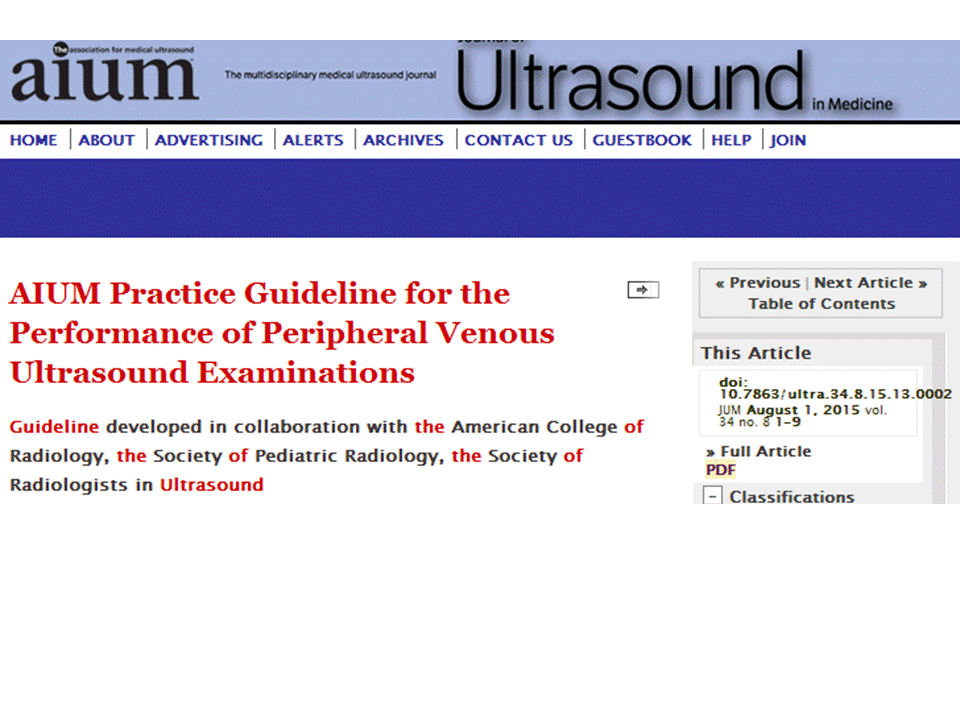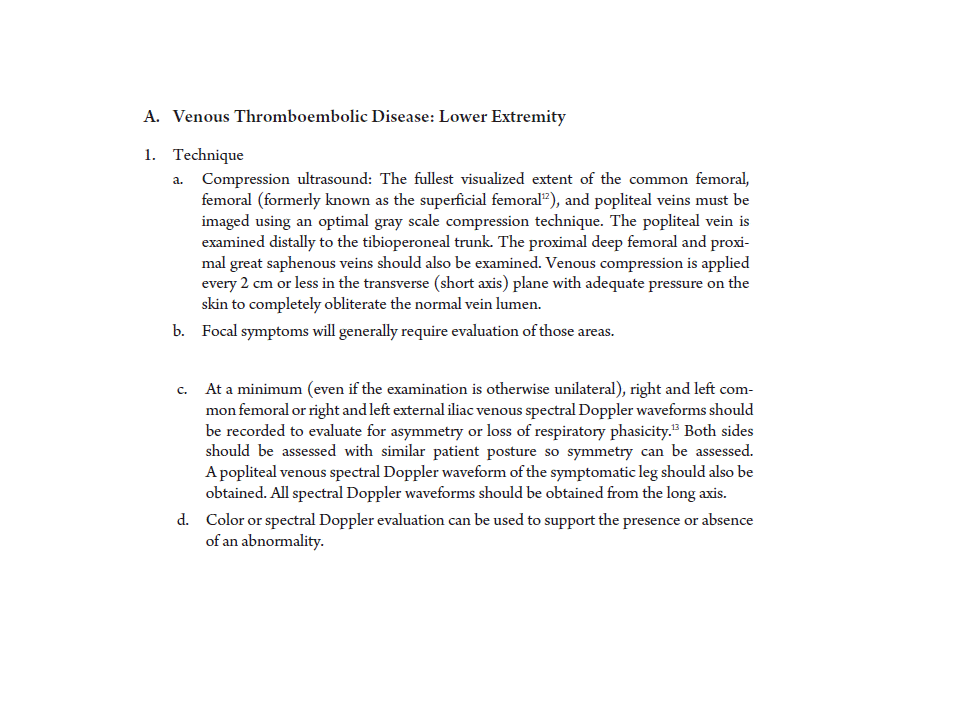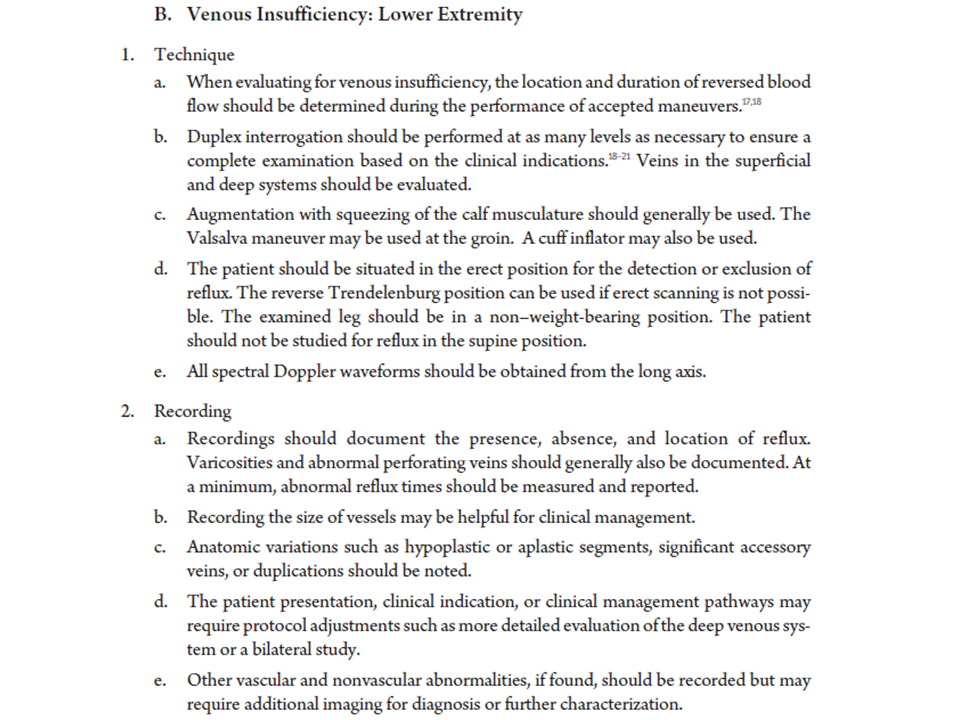View
Multiple Abstracts
Below are the abstracts for all the
articles you selected
Ultrasound and Retained Products of
Conception
Accepted: March 2, 2015; Published
Online: May 04, 2015
Early pregnancy loss is a serious
psychological emergency in obstetrics [1]. In this issue, Esmaeillou et al
[2] offer a highly educative article entitled Accurate detection of retained
products of conception after first- and second-trimester by color Doppler
sonography. Making an accurate diagnosis of retained products of conception
(RPOC) is a major clinical challenge. Because RPOC may cause prolonged
bleeding, endometritis, and intrauterine adhesion—Asherman's syndrome—with
subsequently impaired fertility in the future [3], therapeutic intervention is
mandatory.
© 2015 Published by Elsevier Inc.
Renal Tumors
Received: February 12, 2015; Accepted:
March 10, 2015; Published Online: June 18, 2015
Renal tumors can be classified as
benign or malignant. The former include angiomyolipoma, renal cell adenoma, and
oncocytoma; the latter include renal cell carcinoma, urothelial cell carcinoma,
and other less common primary or metastatic cancers [1,2]. This article
addresses the renal tumors that are most commonly observed in a clinical
setting: angiomyolipomas, renal cell carcinomas, and urothelial cell
carcinomas.
© 2015 Published by Elsevier Inc.
Physician-performed Focused Ultrasound: An Update on
Its Role and Performance
Received: February 13, 2015; Accepted:
February 25, 2015; Published Online: March 26, 2015
There is an increase in the use of
focused ultrasound (US) by physicians because it offers the major benefit of
reduction in time to diagnosis. Some of these physicians have received formal
training on focused US, others have not received any such training. However,
among the formal training given on focused US, there is inconsistency across
the teaching protocols. This review presents performances of focused US
commonly performed by physicians, compared with radiology US. The various
teaching protocols are also discussed.
© 2015 Published by Elsevier Inc.
Ultrasound-guided Corticosteroid
Injection for the Treatment of Athletic Pubalgia: A Series of 12 Cases
Received: August 5, 2014; Accepted: November
24, 2014; Published Online: February 24, 2015
Surgical treatment for athletic
pubalgia is the standard of care, however, it poses risks. This study
investigated the use of ultrasound-guided corticosteroid injections as an
alternative treatment. Twelve consecutive patients underwent injections into
the area of degeneration in the rectus abdominis and/or adductor longus aponeurosis.
The Western Ontario and McMaster Universities (WOMAC) scores were used to
evaluate treatment effectiveness. The average WOMAC score was 90.9. With a mean
follow up of 8.7 months (range, 6–19 months), eight of the 12 patients reported
complete symptom resolution. In conclusion, corticosteroid injections alleviate
pain in patients with athletic pubalgia and provide an alternative to surgery.
© 2014 Published by Elsevier Inc.
Evaluation of Therapeutic Effect of
Contrast-enhanced Ultrasonography in Hepatic Carcinoma Radiofrequency Ablation
and Comparison with Conventional Ultrasonography and Enhanced Computed
Tomography
Received: November 4, 2014; Accepted:
January 30, 2015; Published Online: March 24, 2015
Objective
This paper aims to discuss the
evaluation of the therapeutic effect of contrast-enhanced ultrasonography
(CEUS) in radiofrequency ablation (RFA) for liver cancer and its application
value.
Methods
A total of 80 patients (120 hepatic
malignant tumor lesions) were treated using RFA, and CEUS was conducted on the
liver before and after the treatment. Sixty-five patients (85/120 tumor lesions)
had primary hepatic carcinoma and 11 (30/120 tumor lesions) had metastatic
hepatic carcinoma (6 cases of 15 lesions had colorectal carcinoma, 3 cases of 8
lesions had lung carcinoma, and 2 cases of 7 lesions had gastric carcinoma).
Four patients (5 lesions) had recurrence. Prior to the treatment, CEUS
accurately guided the RFA of lesions, and after the treatment, the accuracy of
CEUS was compared with conventional ultrasonography and enhanced computed
tomography (CT).
Results
After the RFA, there were two cases
of bile leakage, two cases of bleeding, and three cases of hydrothorax, and 20
cases had fever. In the CEUS performed after the operation, 114 of the 120
lesions (94.6%) were not filled with contrast agent in the arterial phase,
venous phase, and delayed phase, indicating that the tumor lesions were totally
inactivated. In the remaining six lesions, the arterial phase was enhanced
partially on the edge, indicating suspected partial residues of tumor lesions.
The final diagnosis was based on the aforementioned two kinds of imaging
examinations in combination with the level of tumor markers, needle biopsy, and
follow-up visits of over 1 month. Based on the therapeutic effects on the tumor
after the operation with the final diagnosis as the standards, the accuracy of
CEUS was 94.6%, whereas that of contrast-enhanced CT (CECT) and conventional
ultrasonography was 93.4% and 60.5%, respectively. A comparative analysis was
performed, which indicated that the difference between CEUS and conventional
ultrasonography was of statistical significance (χ2 = 5.42,
p < 0.05). A comparison between conventional
ultrasonography and CECT was also of statistical significance (χ2 = 5.14,
p < 0.05); however, the comparison between CEUS and CECT
indicated no statistical significance (χ2 = 7.54, p > 0.05).
Conclusion
CEUS has important value of clinical
application both prior to and after RFA operations. Prior to the operation,
CEUS can accurately guide the RFA treatment, whereas after the operation, CEUS
is an important method to evaluate the inactivation after the treatment, and
can be an important means for follow-up visits for partial treatment of hepatic
carcinoma.
© 2015 Published by Elsevier Inc.
Accuracy of Sonographic Fetal Weight
Estimation in Bangladesh
Received: November 27, 2014; Accepted:
February 16, 2015; Published Online: March 26, 2015
Objective
This study was conducted to
determine the accuracy of estimated fetal weight (EFW) by ultrasound, compared
with birth weight (BW), in Bangladesh.
Methods
This is a prospective,
cross-sectional study on well-dated singleton fetuses. The accuracy of
weight-prediction formula is determined by assessing how well the formula works
in a group of fetuses scanned close to delivery. Results of previous studies
were compared with those of this study.
Results
A total of 73 infants were included
in the analysis to determine the accuracy of EFW. The mean absolute difference
between ultrasound EFW and BW was −64.5 (±218.5) g, and the mean relative
difference or the mean percentage error of fetal weight estimation was −1.4%
(±7.6%).
Conclusion
Ultrasound is a reliable modality
for estimating fetal weight in a Bangladeshi population using the head
circumference, femur length, and abdominal circumference formula of Hadlock.
© 2015 Published by Elsevier Inc.
Contrast-enhanced Ultrasound of
Kidneys in Children with Renal Failure
Department of Diagnostic Imaging,
National University Hospital, Singapore
Received: January 28, 2015; Accepted:
April 15, 2015; Published Online: June 04, 2015
Ultrasound (US) has been an
important tool for evaluating and imaging renal pathology in children.
Development of US contrast agents and dedicated software for the detection of
microbubbles has given this radiological investigation a new dimension,
especially in children with renal impairment. Application of contrast-enhanced
US (CEUS) brings US into the domain historically occupied by computed
tomography and magnetic resonance imaging. We retrospectively studied nine
children who had undergone CEUS (age range 3–16 years). This pictorial essay
draws on our experience and illustrates the safety and accurate depiction of
enhancement pattern of focal renal lesions.
© 2015 Published by Elsevier Inc.
Discrepancy Between Duplex
Sonography and Digital Subtraction Angiography When Investigating Extra- and
Intracranial Ulcerated Plaque
Received: November 21, 2014; Accepted:
January 5, 2015; Published Online: March 24, 2015
Noninvasive color-coded duplex
sonography has become a good, convenient, and reproducible screening tool for
the general population when studying cerebral hemodynamics and atherosclerotic
disease. Digital subtraction angiography (DSA) is still the gold standard for
the diagnosis of carotid stenosis, although other noninvasive imaging tools are
also available. At present, ultrasound scanning, followed by confirmatory DSA,
is a cost-effective way to survey patients suspected of suffering from cerebral
arterial stenosis. We report two patients who had cerebral ischemic symptoms
due to high-grade stenosis of either the cervical internal carotid artery (ICA)
or the middle cerebral artery (MCA), combined with an ulcerated plaque.
Ultrasonographic Doppler analysis identified high-grade stenotic lesions as
marked elevations in the turbulent flow of the cervical ICA in one patient and
of the middle cerebral artery in the other patient. Subsequently, huge plaque
ulceration was found by color B-mode scanning of the patient with cervical ICA
stenosis. However, DSA was able to demonstrate only a mild–moderate degree of
stenosis associated with the lesions. High-grade stenotic lesions of the ICA
and the middle cerebral artery were reconfirmed by computed tomography
angiography and magnetic resonance angiography. An atheromatous plaque with
ulceration is believed to be the cause of this discrepancy between ultrasonography
and DSA.
© 2015 Published by Elsevier Inc.
Ultrasound-guided Perineural Vitamin B12
Injection for Peripheral Neuropathy
Received: May 14, 2014; Accepted: January
27, 2015; Published Online: March 26, 2015
The objective of this article is to
present an innovative treatment for peripheral neuropathy using
ultrasound-guided perineural vitamin B12 injection. A 37-year-old
patient presented with a progressive dropped foot for 2 months. Preceding
trauma was denied. On examination, severe weakness of ankle dorsiflexion was
revealed. Ultrasound showed peroneal nerve swelling. Nerve conduction velocity
and electromyography study showed results compatible with peroneal neuropathy.
Under the diagnosis of peroneal neuropathy, the patient was given 500 μg
of methylcobalamin around the peroneal nerve under ultrasound guidance two
times, with an interval of 2 weeks. The patient showed improvement of muscle
power within 2 weeks. Full muscle power was regained after 3 months. There was
no adverse symptom after ultrasound-guided perineural vitamin B12
injection. Ultrasound-guided perineural vitamin B12 has the
advantage of precise delivery of high-dose vitamin B12 directly
around the defective nerve.
© 2015 Published by Elsevier Inc.
A Mass on the Right Fifth Middle Phalanx in a
48-year-old Man with Chronic Hyperuricemia
Published Online: January 07, 2015
A 48-year-old male with a history of
hyperuricemia had a painful mass over his right fifth middle phalanx for 6
months, which made it difficult to flex his right little finger (Fig. 1A).
Milk-like materials were occasionally released from a small pore on this mass.
Ultrasound images of the mass in the short-axis view, in the long-axis view,
and under the power Doppler mode are shown in Figs. 1B, 1C, and 1D,
respectively.
Posterior Knee Pain and Swelling
Published Online: June 24, 2015
A 68-year-old woman presented with
gradual onset of right knee pain for 2 weeks. She reported discomfort at the
back of right knee and difficulty squatting. Initial physical examination
showed swelling of the right posterior knee without redness (Figure 1). Knee
flexion was limited at 130°. Sonographic images are shown in Figures 2A and
2B.What is the diagnosis?































